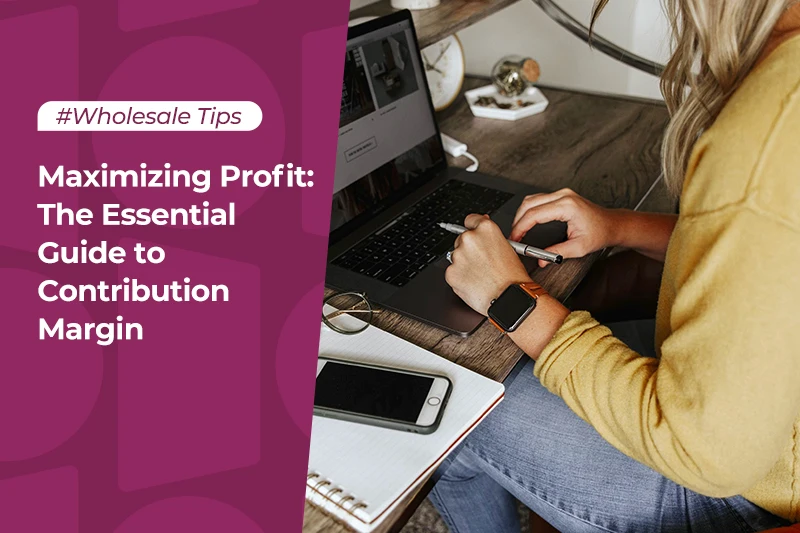What Is Average Order Value (AOV) in E-commerce and How to Improve it?

In the fiercely competitive landscape of business today, the ability to comprehend critical financial parameters is an essential component of strategic business planning. Among these, Average Order Value, frequently abbreviated to AOV, emerges as a key player. In this article, we will explain the concept of AOV, show its determination process and highlight its significance for business strategy. Furthermore, we will present practical and effective approaches to heighten your AOV.
Table of Contents
What Is AOV?
AOV, an acronym for Average Order Value, is a paramount business metric, particularly in the realm of e-commerce. What it depicts is the mean amount spent by customers each time an order is placed with the company within a defined time frame. Essentially, AOV is the business world’s tool to interpret and predict customer spending behavior. It serves as valuable data that aids businesses in devising their pricing strategies, sculpting marketing tactics, and creating customer incentive programs. The rule of thumb is - the greater the AOV, the higher your income; hence, pulling up the AOV is considered a key commercial strategy. Truly grasping the AOV meaning unlocks the potential to maximize profitability while offering a better understanding of your customers. In essence, optimizing AOV underpins the sustainability and success of your business.
How to Calculate AOV?
Comprehending the Average Order Value computation may seem complex initially, yet it is essentially a simplistic yet potent analytical tool. It entails a straightforward mathematical formula that can be expressed as follows: AOV = Total Revenue divided by the Number of Orders. This equation assists businesses in deciphering the average amount that customers spend when shopping with them over a stipulated period.
To break it down further, let's consider an example. Suppose you are an online retailer who, over a span of a month, recorded a total revenue of $10,000, which was an outcome of accumulating 200 orders. To find the AOV for this scenario, you would divide the total revenue ($10,000) by the total number of orders (200), resulting in an AOV of $50.
Monitoring this statistic is pivotal in better understanding your customers' consumption patterns and habits. From this critical insight, businesses can strategically tailor and refine their marketing approaches, pinpoint their pricing strategies, and optimize discerning factors such as product inventory, discounts, and promotional strategies. The calculation of AOV is the initial step towards making informed decisions that could boost profitability and customer satisfaction.

Why Is AOV So Important on Business Strategy?
Understanding the implication of AOV in a business strategy is as vital as decoding its meaning and calculation process. AOV serves as a significant performance indicator, shedding light on customer purchasing patterns, and providing deep insights into their spending behavior. An elevated AOV indicates a higher customer willingness to spend on each transaction, positioning the business towards increased profitability.
Comprehending AOV can lead to the strategic shaping of product pricing, facilitating a targeted approach towards setting customer acquisition costs and the allocation of marketing funds. Essentially, a robust AOV elevates the effectiveness of marketing campaigns, given that it allows businesses to understand the value to be derived from each transaction.
Furthermore, AOV plays a key role in curating impactful customer loyalty programs and framing enticing promotional offers, driven by its influence on revenue generation. By rewarding frequent purchases or higher spending patterns, businesses can stimulate a higher AOV, contributing towards enhanced customer retention. Moreover, developing a precise comprehension of AOV can empower businesses to make informed decisions and effectively strategize towards maximized revenue generation and business growth.
6 Effective Strategies to Increase AOV
To transform an existing business strategy with the primary goal of boosting your AOV, you need a keen understanding of your customers' preferences and spending patterns. Here are six strategic and tested approaches that can help turn the revenue tide in your favor and accelerate your AOV appreciation.
1. Upselling Products - Silently Encourage Bigger Purchases
Upselling can be a tricky maneuver, but if employed correctly, it can help increase the AOV dramatically. Convincing your clients to opt for an upgraded version of the product they have selected hits two birds with one stone—it improves customer satisfaction with a superior product and an elevated AOV due to higher product pricing. However, this requires strategic finesse and a thorough understanding of your client's needs and choice variables.
2. Cross-Selling - Diversify The Purchases
Cross-selling is an effective way to introduce and sell products complementary to the ones already in the customer's shopping cart. An apt recommendation system not only enhances the shopping experience but also capitalizes on the opportunity to increase the customer's overall spending. For example, suggesting a suitable phone case and protector for a customer who just bought a smartphone can likely increase your business's overall AOV.
3. Volume Discounts - Envision Bulk to Deliver Revenue
Customers are attracted to discount offers. When executed properly, volume or quantity discounts have the potential to significantly increase the AOV. By offering discounts on the purchase of larger quantities or product bundles, you can encourage customers to buy in bulk. The trick here is to set the price thresholds at strategic points where buyers feel they're getting substantial savings, prompting them to increase their total spent.
4. Free Shipping Thresholds - Lure by Saving
The allure of free shipping is compelling to customers. Setting a free shipping threshold marginally higher than your current AOV can incite customers to add more items to their cart to avail of free delivery. This practice can subtly nudge customers to spend more and is particularly effective among online shoppers.
5. Loyalty Programs - Reward to Reap
Loyalty programs are an excellent way to incentivize increased spending. Providing rewards that scale with the amount spent can encourage customers to stretch their budgets a bit further each time they shop. Furthermore, loyalty programs also foster a sense of belongingness and generate repeat business, enhancing customer lifetime value.
6. Time-Specific Promotions - Play on Customers' Fear of Missing Out (FOMO)
Limited-time offers or flash sales are a great strategy to compel buyers to make instant purchasing decisions. The fear of missing out on a good deal can drive customers to spend more in a single transaction, thus increasing AOV.
Overall, while all of the above strategies have been proven successful in boosting AOV, the key lies in understanding your specific business and customers' dynamics. Customizing these strategies and integrating them seamlessly into your business model can greatly enhance your AOV and thereby optimize your business's profitability.
Conclusion
In conclusion, Average Order Value (AOV) serves as a critical metric in e-commerce, reflecting the health and profitability of your business. By understanding what AOV is, how to calculate it, and its strategic significance, you can implement effective tactics to boost it. Employing strategies like cross-selling, upselling, bundling, and personalized recommendations can help you not only increase AOV but also enhance customer satisfaction and revenue. A higher AOV ultimately contributes to a more prosperous and sustainable e-commerce venture, making it a key element of your business strategy.
FAQ
How does AOV differ from other e-commerce metrics?
Average Order Value (AOV) predominantly focuses on the average monetary value of each transaction in a set timeframe. Unlike other e-commerce metrics that may examine the number of customers, visitors, or click-through rate, AOV specifically provides insights into the customers’ spending behavior. It aids in understanding the mean amount spent per transaction, thus aiding in devising pricing strategies, sculpting marketing tactics, and crafting customer incentive programs.
What affects average order value?
Several factors directly or indirectly affect the Average Order Value. These include product pricing, effectiveness of upselling and cross-selling strategies, enticing volume discounts, free shipping thresholds, and loyalty program structures. Additionally, time-specific promotions can also play a significant role in influencing AOV. Essentially, anything that alters customers' spending behavior or the buying decision process could have impacts on AOV.
Can AOV be applied to all types of e-commerce businesses?
Yes, AOV can be applied across all types of e-commerce businesses. Regardless of the business's nature, understanding the average transactional value and customers' spending habits is crucial. A keen insight into AOV can aid various e-commerce businesses, from online clothing stores to tech gadget platforms, in shaping their pricing and marketing strategies.
Start your borderless business here
Tell us about your business and stay connected.
Keep up with the latest from Alibaba.com?
Subscribe to us, get free e-commerce tips, inspiration, and resources delivered directly to your inbox.
















